From humble beginnings as just another Phoenician colony in a ‘distant part’ of the world, Carthage or Kart-hadasht (Phoenician – ‘new city’) – known as Karchedon by the Greeks and Carthago by the Romans, emerged as one of the greatest Mediterranean powers that challenged the might of both Syracuse and Rome.
Located in what is now Tunisia, in North Africa, the city by the late 4th century BC flaunted both its commercial and military significance after the original Phoenician city-states in the Levant were politically sidelined due to Alexander’s invasion.
In essence, Carthage took over the remnants of many of the various Phoenician colonies, especially along the western Mediterranean, ranging from North Africa, Sicily to Iberia (Spain and Portugal), thus establishing itself as the predominant maritime power in this part of the world – borne by commercial colonies, military outposts, and charismatic generals (including the great Hannibal Barca).
So, without further ado, let us take a gander at the incredible history of ancient Carthage and its ‘multifarious’ Carthaginian army, comprising professionals and mercenaries.
Contents
The Figurative ‘Leash’
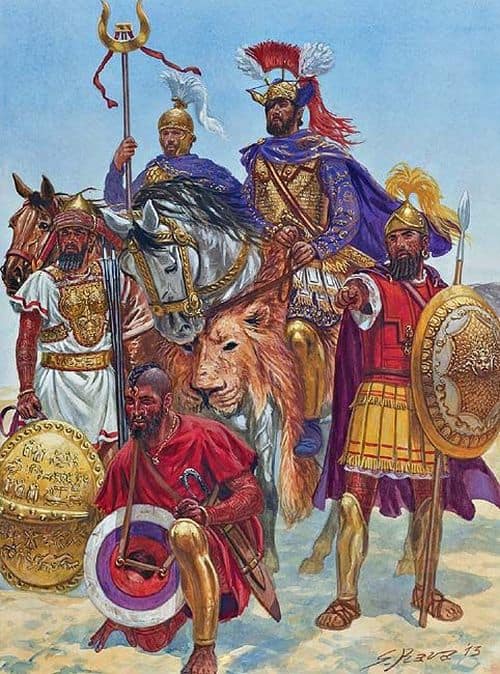
It is known that by the 6th century BC, Carthage was governed by an oligarchic system headed by two chief magistrates (initially one) known as sufetes, who presided over a council of possibly 104 men, simply called ‘the hundred’ by Aristotle. And while this body resembled the senate of the later Romans (albeit in a smaller form), Carthaginians made a distinction when it came to electing such civilian councilors and choosing or employing military generals.
Simply put, such offices were kept separate (as opposed to other Mediterranean power centers like Greece and Rome), with ‘the hundred’ given the executive power to judge and scrutinize the actions of the employed military generals.
Now it should be noted that Carthaginian army commanders, in general, were given full autonomy to conduct their campaigns and military maneuvers. However, the magistrates could interfere and pass their judgments in cases where the commander failed to achieve his objective or more importantly transgressed his authority.
Pertaining to the latter, the system sort of acted as a counterbalance to the perceived rising power of the generals who could have usurped the civilian administration of Carthage – with similar episodes happening in both contemporary Greece and Rome.
On occasions, such transgressions were possibly dealt with harshly, including the death penalty by crucifixion – as was the gruesome fate of Bomilcar, who according to Diodorus, wanted to make himself the tyrant of Carthage in circa 308 BC. However, at the same time, the seemingly equitable system was sometimes abused by members of ‘the hundred’ who wanted to keep their figurative ‘leash’ on the successful commanders, so as to consolidate their own power and political mileage.
The Privatization of War
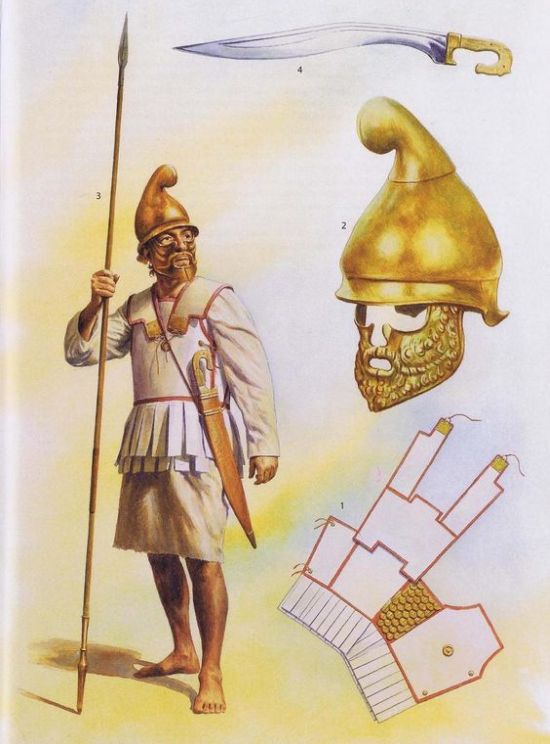
It was not only this civilian-military hierarchy that differentiated Carthage from other Mediterranean powers. The core divergence also was mirrored by the ancient Carthaginian army, borne by the inherent situations faced by the city-state.
To that end, the state made a distinction between its native subjects and the free citizens of Carthage (basically the native ‘Punic’ Carthaginians – of Phoenician ancestry). The former were required to serve in the military while the latter were not obligated to do so – partly because their numbers were not sufficient for regular martial services.
This logistical ‘void’, coupled with the commercial might and network of Carthage, led to the unique military scope of the ancient Carthaginian army employing entire mercenary contingents from near and distant lands. Initially, many of these mercenaries were sourced from the western Mediterranean realms (including Greece).
Over time, Carthage began to induct warriors and even soldiers of fortune from the Iberian peninsula (comprising Spain and Portugal), Campania (in southern Italy), and the northern Celtic lands – so much so that by the 3rd century BC, native Carthaginians stopped serving in the army with the exception of high-ranking positions.
In contrast, the Carthaginian navy continued to employ free citizens of the state, thus providing this military arm with a small yet consistent number of better-trained marine soldiers and officers – many of whom had commercial interests in overseas colonies and trading posts.
The ‘Sacred Band’ of the Carthaginian army
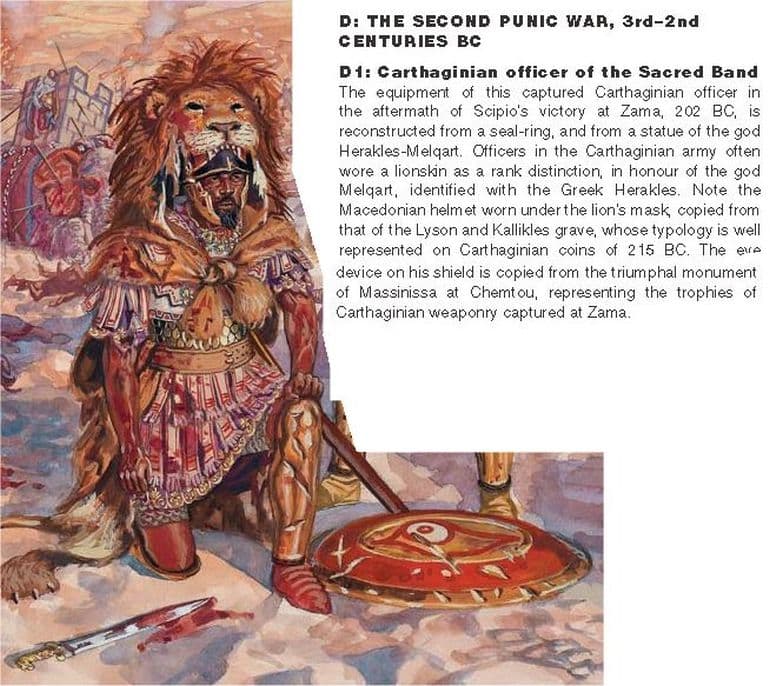
It should be however be noted that Carthaginian (Punic) citizens could be called to arms during times of emergency, with one pertinent example relating to the momentous Battle of Zama (circa 202 BC), fought between Hannibal Barca and Scipio Africanus.
Furthermore, in the earlier centuries, the Carthaginian army did have an elite corps of citizen soldiers, known as the Sacred Band (or heiros lochos in Greek), and they were instrumental in fighting against the Greeks of Sicily.
According to Plutarch, the members of the Sacred Band (not to be confused with the Sacred Band of Thebes) were picked noble citizen-soldiers who flaunted their magnificent armor and best equipment. Diodorus further added how these citizen soldiers were distinguished by their “valor and reputation as well as their wealth”. In essence, this elite regiment only inducted Punic members, with 2,500 of the core troops being recruited directly from Carthage.
There is also a possibility that an additional 7,500 men served in the unit (or at least in an extended version of the corps), and these men, armed with their characteristic white shields, may have been recruited from the Punic populace in the nearby African cities and colonies.
In any case, the Sacred Band was probably all but destroyed in the 4th century BC, after their heavy defeat at the Battle of the Crimissus (circa 341 or 339 BC), at the hands of a Syracusan army led by the Greek general Timoleon.
Libyans and Numidians
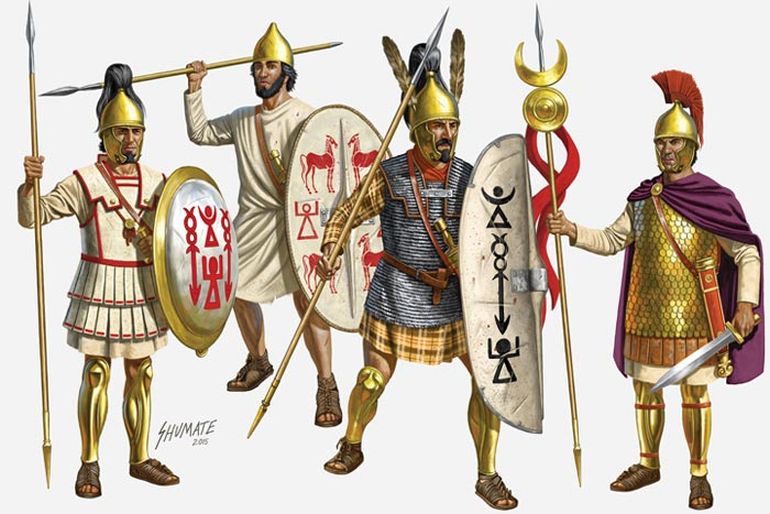
So as the citizenry militia and army were gradually being phased out by the Carthaginian army, Carthage made use of its commercial enterprises and territorial possessions to bolster its armed forces. Pertaining to the latter, one of the major sources of conscripting troops came from the ancient Libyans who served as subject levies.
Many of these Libyans were probably simple peasants who worked in the fields of massive Carthaginian estates. When levied, they were trained as spearmen to hold the line, much like the relatively light-armored theureophoroi of the Greeks, thus serving as the hardy backbone of the field army.
Curiously enough, Carthage also relied on a certain segment of the populace known as the Liby-Phoenicians for its military needs. As their name suggests, the particular group had mixed ancestry (of native and colonial blood), and as such, tended to have better rights than their Libyan brethren.
Coming from merchant and artisan backgrounds, these men were mostly found in various Carthaginian colonies in Africa and later even Iberia. Mirroring the proverbial ‘middle class’, they were possibly equipped in relatively better armor and fought as heavy hoplites.
Quite intriguingly, by the late 3rd century BC, many of the Liby-Phoenicians (along with some of their Libyan compatriots) serving in Iberia, under the military umbrella of the famed Barcid family (the lineage of Hannibal Barca), might have been trained to fight with Iberian style cut-and-thrust swords and the scutum shields.
This, in turn, may have allowed the members of Hannibal’s African contingent to re-equip themselves with the weapons and armor captured as booty from the Romans during the Second Punic War (as mentioned by Polybius), and yet maintain their original fighting cohesion and style.
And since we brought up Hannibal Barca, very few units showcased their on-field efficacy against the tightly packed Romans as the general’s Numidian riders armed with only javelins. Espousing daredevilry on horseback, they probably rode without reins – instead of using just a rope around the horse’s neck and a small stick to give it commands. In many cases (like at the Battle of Trebbia), Hannibal utilized their nigh-perfected mobility and zig-zag maneuvering ability to draw the attention (and ire) of the Romans.
Such skirmishing tactics, often mixed with vocal insults, in turn, forced the roused Romans to give battle even when they were under-prepared. However, when it came to their recruitment, unlike the Libyans and Liby-Phoenicians, it is more probable that the Numidians were drawn from the allied states of Carthage (as opposed to subjects).
Simply put, these expert horsemen were probably supplied by the Numidian princes on friendly terms with the Carthaginian empire, thus bridging the gap between allies and actual mercenaries.
The Motley of Carthaginian Mercenaries
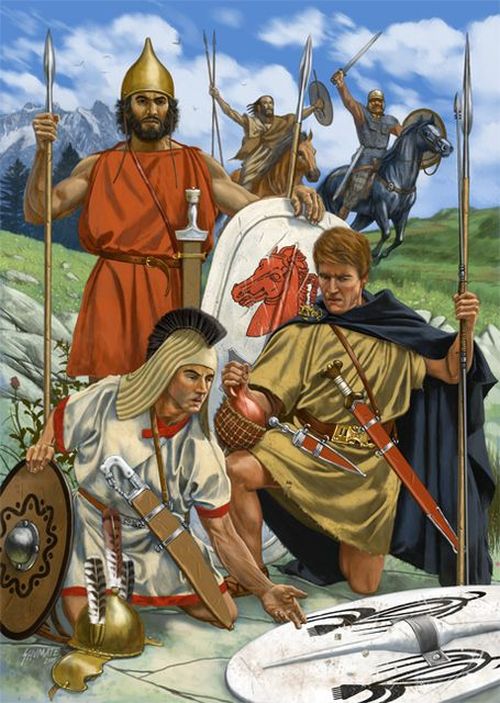
Reverting to the military scope of employing mercenaries en masse, the system of ‘foreign’ troops serving in the Carthaginian army was already adopted by the early 5th century BC. For example, in 480 BC (as mentioned by both Herodotus and Diodorus), in a war against the Greeks of Sicily, one Hamilcar recruited his soldiers from Italy, Liguria, Sardinia, Corsica, Iberia, and Gaul.
Almost two centuries later, by circa the late 4th century BC, the tradition clearly continued, with Carthage employing warriors from distant Etruria, the Balearic Islands, and even contingents of Greek auxiliaries. Hannibal Barca’s renowned army (that invaded Italy after bypassing the Alps) was described by Livy as “a hotchpotch of the riff-raff of all nationalities” – comprising his core African contingent, complemented by Numidians, Iberians, and Celts.
However, it should be noted that over time, some of the ‘distant lands’ were gradually transformed (either annexed or acquired) into overseas territories or client states of Carthage. In essence, while the troops recruited from these regions were initially perceived as mercenaries, in the later centuries, many of these ‘foreigners’ were simply levied subjects who were obligated to serve in the Carthaginian army.
One pertinent example would relate to the caetrati, the lightly armored yet highly effective Iberian skirmishers who mostly served as levies in the armies of the Barcid family (that maintained its grip in Hispania). On the other hand, the heavier armored scutarii (known for carrying their bigger scutum shields) was possibly employed as valued mercenaries – thus fulfilling their roles as the crack troops tasked with holding the battle lines in strenuous scenarios.
Carthage and the Greek Inspiration
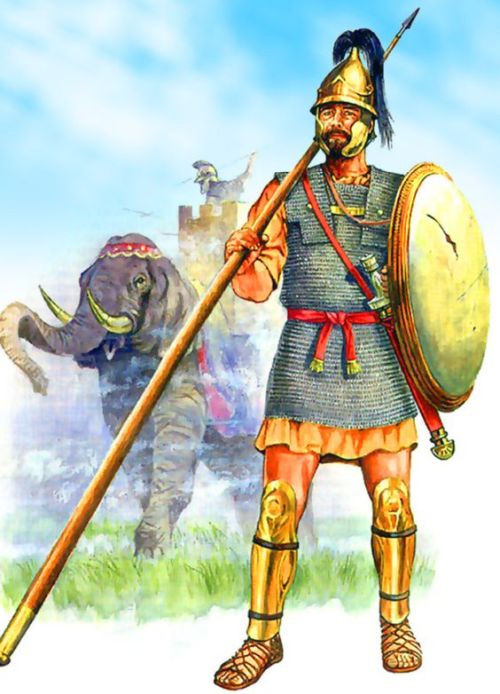
It should be noted that before the influence of the Barcid family on ancient Carthage and its military colonies (especially in Hispania, in the Iberian peninsula), the Carthaginian army was thoroughly inspired by their Greek counterparts. Part of it probably had to do with their heavy defeat at the hands of the Greek hoplites during the aforementioned Battle of the Crimissus (circa 341 BC).
In essence, the encounter proved to be a watershed moment for the Carthaginian military, after which they tended to ‘phase out’ the citizen army (including the Sacred Band) in favor of hiring even more mercenaries and foreign Greeks – many of whom possibly fought in the hoplite phalanx formation.
To that end, it is highly probable that Carthage also trained some of its own subject levies (like Libyans) to fight in a roughly hoplite style, at least in the time period preceding the Second Punic War.
The question may arise – what exactly is this hoplite style? Well, Xenophon talked about the tactical side of a hoplite phalanx, which was more than just a closely-packed mass of armored spearmen.
He drew the comparison to the construction of a well-built house (in Memorabilia) – “just as stones, bricks, timber, and tiles flung together anyhow are useless, whereas when the materials that neither rot nor decay, that is, the stones and tiles, are placed at the bottom and the top, and the bricks and timber are put together in the middle, as in building, the result is something of great value, a house, in fact.”
Similarly, in the case of a phalanx of Greek hoplites, the Greek historian talked about how the best men should be placed both in the front and rear of the ranks. With this ‘modified’ formation, the men in the middle (with presumably lesser morale and physical prowess) would be inspired by the front-placed men while also being ‘physically’ driven forth by the rear-placed men.
The Professional Soldier
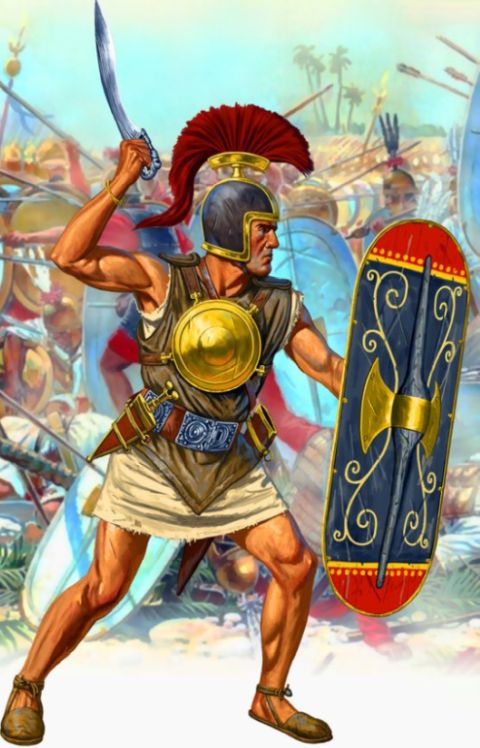
With all the talk of Carthage employing mostly mercenaries instead of opting for citizen armies (like Athens, Sparta, and Rome), a credible query can be put forth – was there any particular advantage to this system or was it just a way of the Carthaginian army compensating for its ‘native’ military shortcomings?
Well, the answer is – both. Pertaining to the first part, there is no question about the military proficiency of mercenaries, since they could be trained and ‘hardened’ through the rigorous passage of battle after battle.
In contrast, most citizen militias were dispersed after major engagements since they needed to tend to their agricultural fields. Simply put, a mercenary could be viewed as a professional soldier who was drilled in the art of war, as opposed to an ordinary citizen who was more accustomed to the rigors of agriculture and domestic affairs. Of course, there were exceptions to this scope, like the ‘citizen’ Spartans and their warrior culture.
As for the second part, as we fleetingly mentioned before, there were simply not enough Punic citizens in North Africa that could have accounted for a formidable force. The situation was rather exacerbated by the lack of enthusiasm of many high-ranking noble and mercantile families to take part in martial activities. Now when viewed through the lens of practicality, hiring mercenaries had its fair share of burdens and troubles, especially when the said group was not paid in accordance with the agreements.
One pertinent example would relate to the devastating Mercenary War (or Libyan War), fought from circa 240 – 238 BC, which was instigated by the mercenaries of the First Punic War whose payments were delayed, simply because Carthage faced crippling blows to its economy following their defeat at the hands of the Romans.
Furthermore, a citizen-soldier could be ‘motivated’ by the prospect of gaining more lands or at least defending his homeland, while mercenaries were prone to be driven by the allure of payments and plunder.
Recruiting Far and Wide
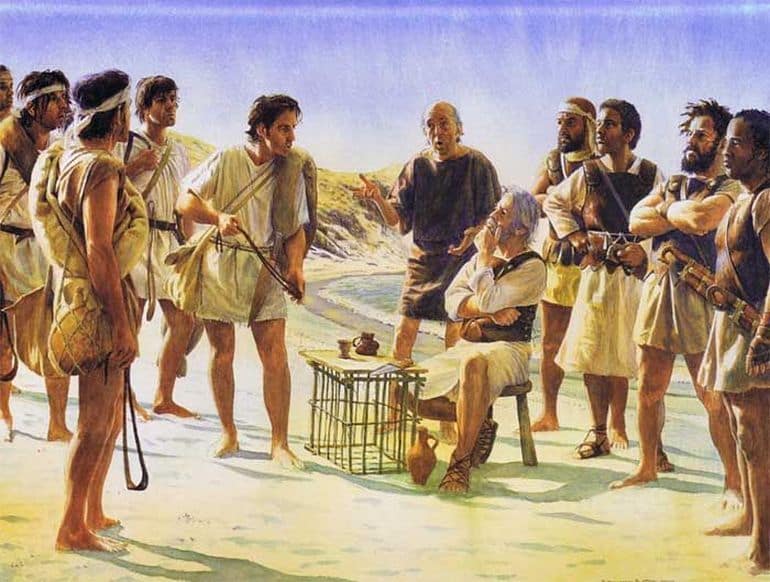
Till now we have talked about the military effect of mercenaries. But what about their scope of recruitment? Well, to that end, the Carthaginian army mainly employed three processes to procure foreign fighters.
The first of these entailed the relatively straightforward treaties and pacts that allowed for a specific quota of warriors from foreign or neighboring states (that were mostly allied to Carthage) to take part in Carthaginian campaigns. Many Sicilians and Numidians were possibly sourced by this method.
The second process involved a more complex method wherein specially appointed military officers were sent far and wide (ranging from Iberia, and southern Gaul to Italy and Greece) to recruit their quota of mercenaries. Provided with a lump sum amount of money, these men had to maintain their ‘channels’ and make contact with the mercenary captains.
The contract was then negotiated and penned, and subsequently, the mercenary band, commanded by their local captains, marched (albeit temporarily) under the banner of Carthage. A famous example would pertain to the employment of Xanthippus, the famed Spartan mercenary general who led the Carthaginian army to score a rare victory (at the Battle of Tunis) during the First Punic War.
The third process basically boiled down to rampant bidding wars and outright reversal in numbers of ‘enemy’ mercenaries. To that end, ancient Carthage, often by virtue of its commercial might (at least before the advent of the First Punic War), was sometimes able to lure mercenaries serving in the enemy camp by promises of higher payments and rewards. In that regard, there are examples of both Greek and Celtic mercenaries leaving their former paymasters to join Carthaginian ranks.
The Importance of Shield
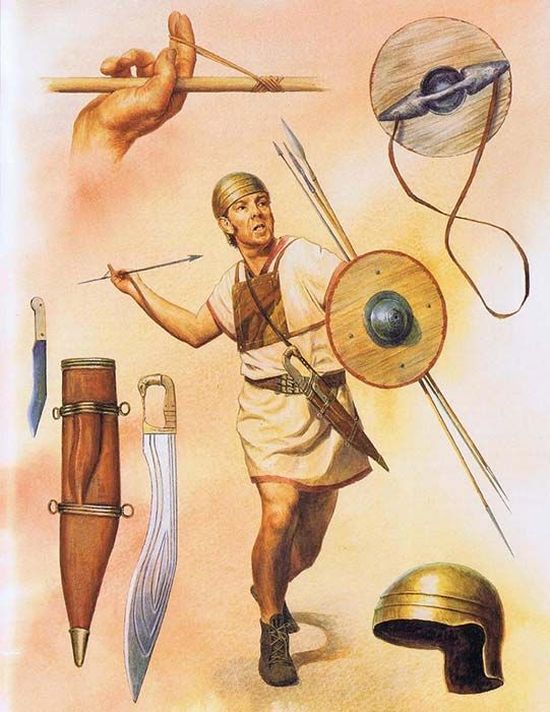
Given the wide multitude of foreign warriors who fought for Carthage and the variety of arms and accouterment they brought to the field, it is indeed a complex task to focus on the equipment and armor preferred by individual groups. To that end, in our previous articles, we have already discussed the ancient Celtic warrior, Greek hoplite, Italic fighter, and even the Republican Roman soldier (many of whose armor were possibly adopted by Hannibal’s crack force in Italy).
In any case, when it came to offensive weapons, the melee spectrum mainly ranged from the trusty spear, a secondary sword to a complementary dagger. On the missile front, ancient troops around the Mediterranean tended to use bows, javelins, or smaller spears (the trademark of both light Iberian skirmishers and frontline Roman soldiers), and slings (with some form of expertise brought forth by the Balearic regiments).
But the sense of self-preservation far outweighed the will to kill, and thus individual soldiers – whether he be a citizen militia or hardened mercenary, mostly preferred better defensive equipment. In essence, the societal position of a warrior often mirrored this psychological attribute, with lowly troops being offered little-to-no body armor, while nobles draped themselves in exquisite metallic cuirasses and breastplates.
However, almost all soldiers of the time endeavored to protect their heads by wearing various types of helmets, ranging from intricate Corinthian models (or their pilos variants) to modest conical caps made of boiled leather (cuir bouilli).
The other ‘ubiquitous’ defensive equipment pertained to the shield. And like in the case of the helmets, the size and heaviness of the shield rather defined the role (and sometimes status) of the soldier on the battlefield.
For example, the caetrati Iberian skirmishers (pictured above) derived their name from the caetra, a small round buckler made of hardwood and reinforced with a central metal boss and fittings. On the other hand, some of their Iberian brethren also carried the heavier rectangular scutum shield, and thus these scutarii formed the heavy infantry contingents in Hannibal’s Carthaginian army.
A Profile of a Carthaginian Veteran
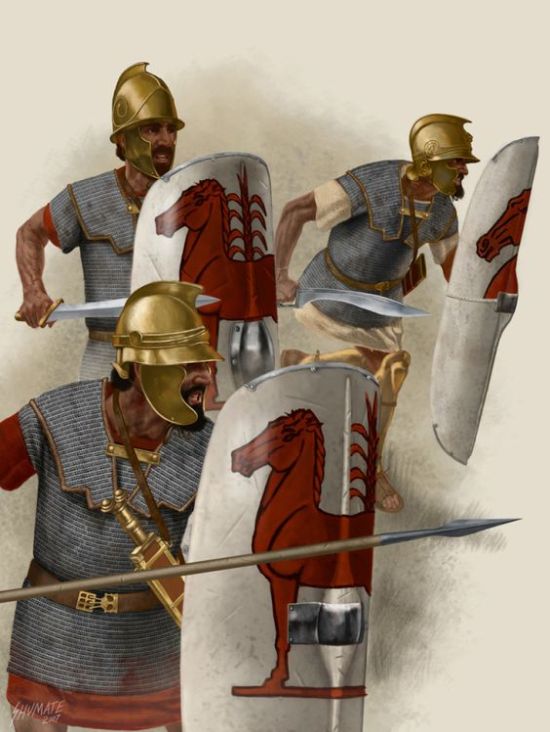
Battles were the crucibles where experience, killer instinct, martial skill, and discipline were forged. Simply put, the longer a soldier survived in these bloody encounters, the greater became his capacity to establish his martial nature and ruthlessness mixed with a paradoxical dash of self-confidence and fatalistic attitude. The former came from familiarity with such brutal scenarios and the latter emerged from the acceptance of the proverbial ‘dance of death’.
The Carthaginian army veteran, possibly a member of Hannibal’s crack African infantry (pictured above) or a mercenary of various wars, must have matched up with this character profile. In essence, the mark of a true soldier didn’t come from his impetuous (but fleeting) courage in battles, but his ability to react calmly and swiftly in strenuous scenarios.
This was coupled with his willingness to take orders and be subordinate to the commanding officer – thus establishing clear boundaries where groups functioned as a whole (as opposed to individuals) to dictate the course of the encounter.
Furthermore, the veteran, by virtue of his greater martial prowess, also tended to showcase better physical aptitude and agility – qualities that were paramount to surviving in bloody scenarios, especially when the war was one’s trade.
Featured Image Credit: Ares Games
References: Britannica
Book References: Carthaginian Warrior 264-146 BC (By Nic Fields) / Pride of Carthage (By David Anthony Durham)
And in case we have not attributed or misattributed any image, artwork, or photograph, we apologize in advance. Please let us know via the ‘Contact Us’ link, provided both above the top bar and at the bottom bar of the page.
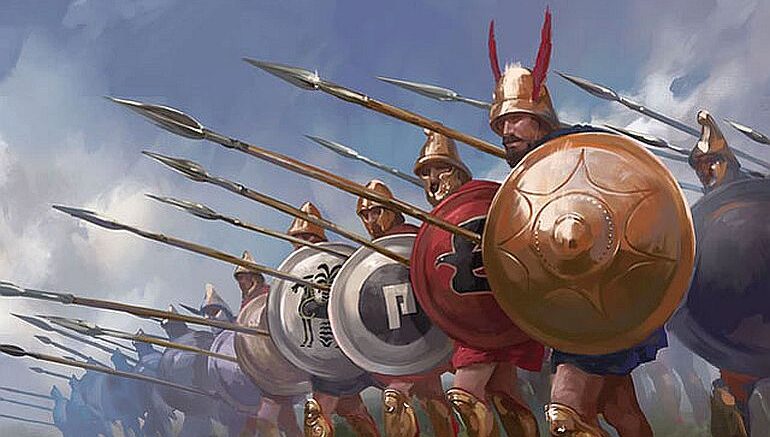
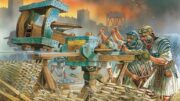

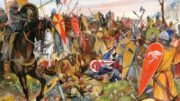
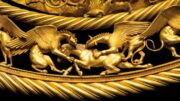
Be the first to comment on "The Ancient Carthaginian Army: Mercenaries and Professionals"